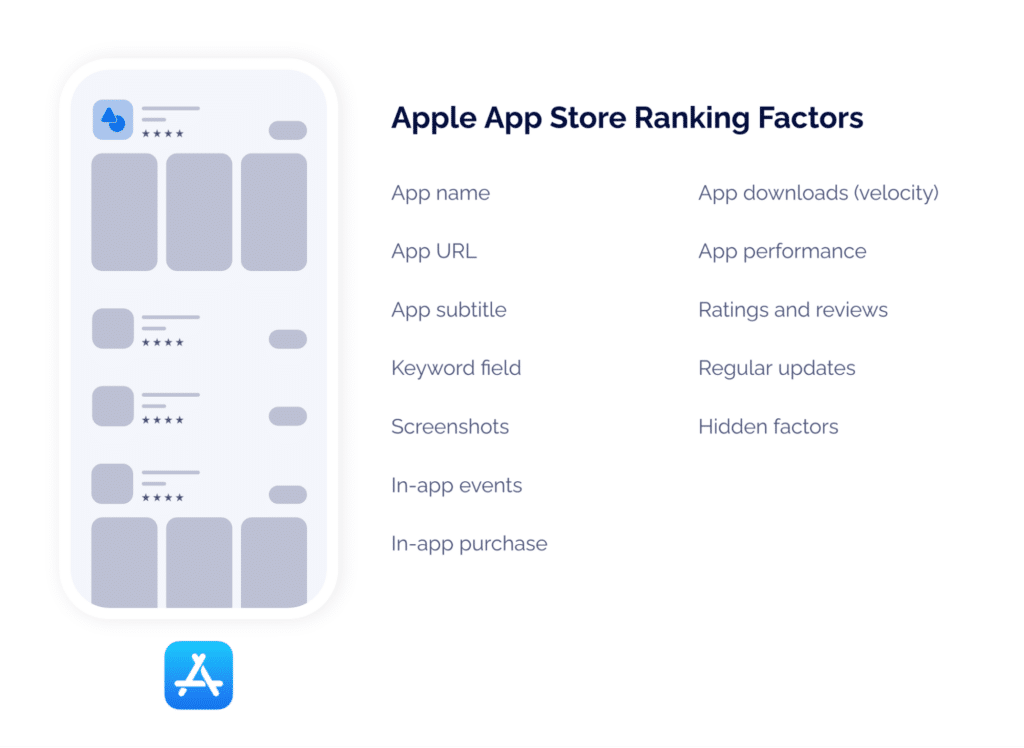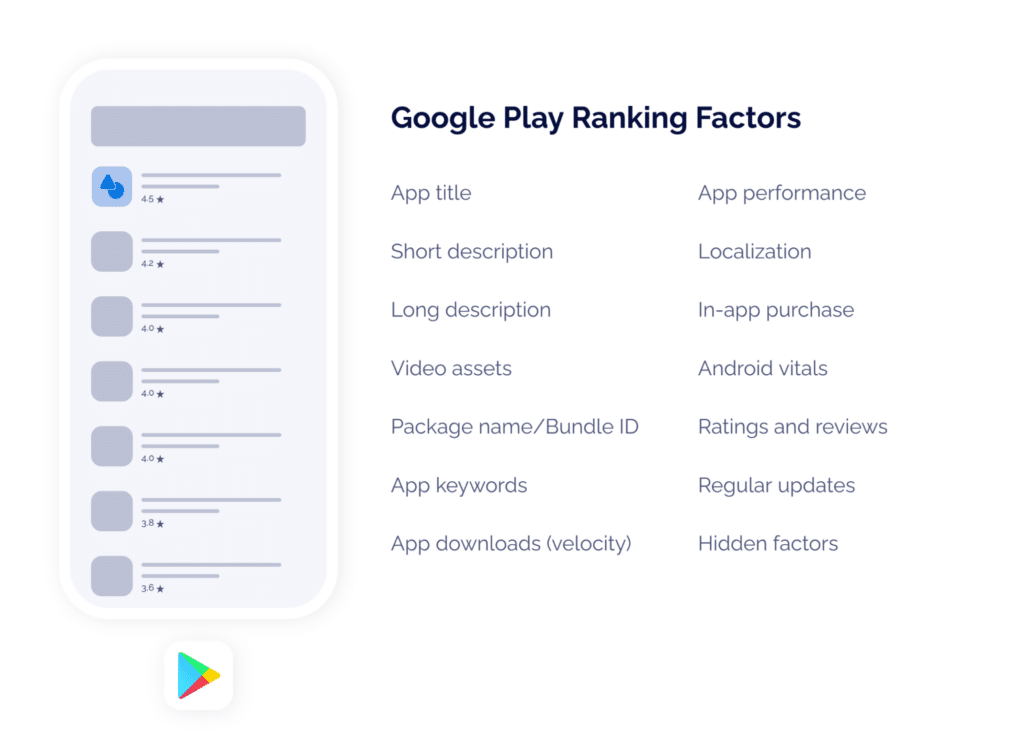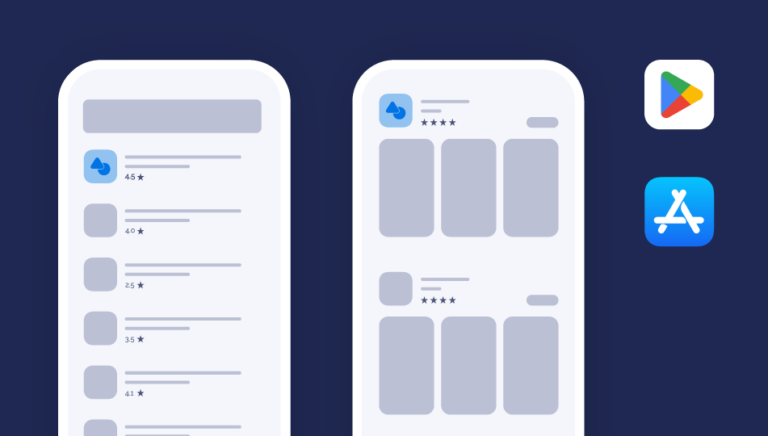App developers take painstaking measures to design mobile apps that engage consumers — but that’s only the first step in the process. The next step is acquiring users, often by listing the app in the app store so users can find it.
That’s where app store optimization (ASO) comes into play. ASO is the process of optimizing an app store listing — primarily on the Google Play Store and Apple App Store — so it’s easy to discover and download. The higher the ranking in the search results in the app store, the more visible a mobile app will be to users and the more likely they will be to download and install it.
To accomplish this, app developers and marketers must apply app store optimization strategies, which include designing an eye-catching icon and app name, using relevant keywords in the app title and subtitle, including screenshots and videos in the app preview, and prompting users to share reviews, among other things.
When app developers and marketers take the time to do this well, they increase their exposure and set the stage for profitability.
What should you know about ASO?
Before beginning the ASO process, it’s important to understand the factors that influence it. The Google Play Store and Apple App Store continuously optimize the algorithms they use to determine how an app ranks. However, a best practice that will be true regardless of algorithm changes is: for an app to perform well in the app store, it must be relevant to how users search. So consider user intent and how best to describe the app’s core functionality and value.
The number of app downloads is also key to success in the app store. The more app downloads and installs an app has, the higher it ranks in the search results. Therefore, in addition to ASO, app developers and marketers should also be looking for ways to drive downloads with marketing beyond the app store. Deep linking from channels like social media, email, and QR codes can promote an app and drive higher rankings.
User ratings and reviews also influence app store rankings. Mobile apps with more positive reviews are favored in the search results, and so are apps that have high engagement rates. In addition, apps with frequent updates and patches also tend to perform better in the app store.
App store optimization tips
To make the most of their app store presence, app developers and marketers may turn to app store optimization tools. These tools can help with one of the most vital tasks of ASO, which is keyword optimization. Selecting relevant keywords is an essential part of app discoverability. This includes keyword research that captures the app’s audience, category, and features as well as search volume and long-tail keyword options.
When naming a mobile app, it’s important to incorporate these keywords while creating a title, subtitle, and other metadata that are memorable yet succinct. Also, use the same keywords in the app description to create a clear overview of the app, its features, and its value proposition for users.
Visuals matter, too, because they help draw in potential users. An app icon is the first thing users will see when browsing through apps, so make sure it’s attractive, distinctive, and reflects the app’s purpose. Consumers want to see what the app is actually like before they download it, so be sure to include app screenshots of key features and preview videos of how the app works. These can help seal the deal if a user is undecided about whether or not to download and install an app.
It’s also a best practice to solicit positive ratings and reviews. These can help boost an app’s credibility and gain more downloads and installs.
And don’t forget about user experience. App developers should provide frequent updates and bug fixes to create positive engagement with the app, and they should regularly add new features to keep app users coming back for more.
Finally, mobile marketing efforts also support ASO because they drive users to an app. Savvy app marketers and developers should incorporate social media and paid promotional campaigns, like Apple Search Ads, to their ASO plans for best results.


What are some app store optimization metrics?
As with any marketing effort, it’s important to measure success. App store analytics are key performance indicators (KPI) that measure how well an app is performing in app stores. Part of why these analytics and metrics are so essential is that they reveal different success factors of an app. Typically, when these numbers drop, it’s time to take another look at your ASO tools and how you’re marketing your app.
ASO tools can help track and measure an app’s success by collecting and analyzing data around some key ASO metrics. First, app developers and marketers should keep an eye on the app’s app store ranking and related keywords and continue to optimize over time. This will let them know if the keywords they chose are yielding results. If they aren’t, it’s time to change them to increase visibility and ranking with the target audience.
The conversion rate is another KPI worth tracking. This is the percentage of app store visitors who download an app. A low conversion rate means the app developer or marketer hasn’t optimized the app in the app store and that it’s time to evaluate strategies.
Retention rate is important, too. This measures how many users actually engage with an app after they download it. If this metric is low, it means the app isn’t adding value for users or that the user experience isn’t a good one.
Of course, it’s essential to monitor in-app ratings and reviews, which provide direct feedback about the app. Here, app developers and marketers can spot pain points with the app, which can help them pinpoint problems and create updates and fixes to improve the user experience. This metric is critical because visitors to the app store also view this feedback and use it to inform their decision about whether to download an app.
Revenue speaks volumes, and it’s a significant metric in determining the financial success of an app. But lifetime value (LTV) should also be monitored. Are users making in-app purchases, signing up for subscriptions, and responding to advertisements? Are they using the app instead of calling into a call center or sharing the app to friends and family? All of this is related to the LTV of an app, which is the total revenue a user generates for an app while they use it. If these metrics are not hitting the mark, it’s an indicator that the monetization strategy for the app needs to be refined.

Finally, and most obviously, it’s important to measure the number of app downloads. This ASO metrics is a good overall indicator of whether or not the ASO strategy is working or if the app developer or marketer needs to refine it and try again.
In the end, ASO is critical to an app’s success. When marketers and app developers optimize their presence in the app store, it can attract highly engaged users and yield profitable results.
Learn even more about ASO, including trends, real-life examples, and bonus app marketing tips beyond ASO, in our App Store Optimization Guide.






















